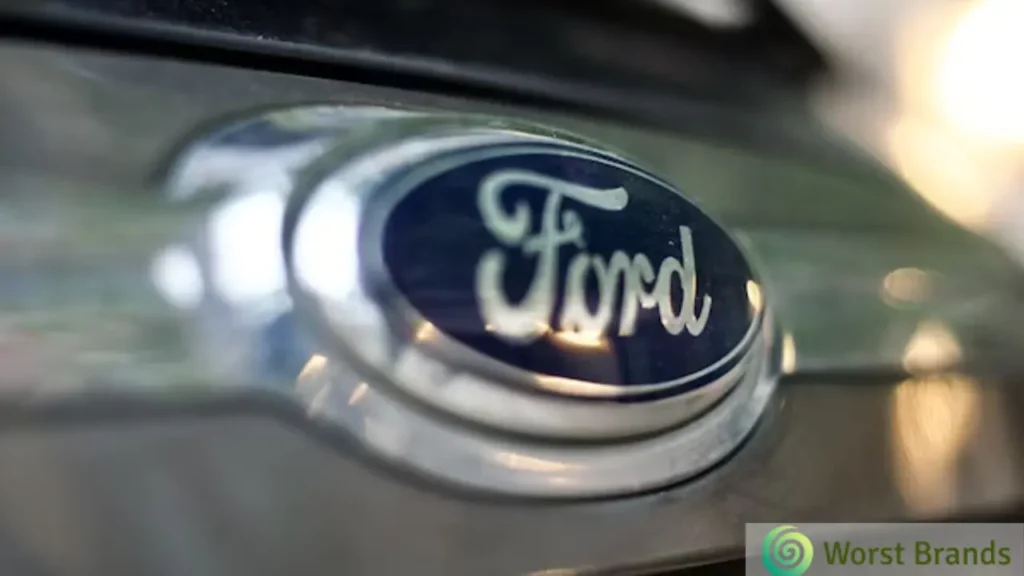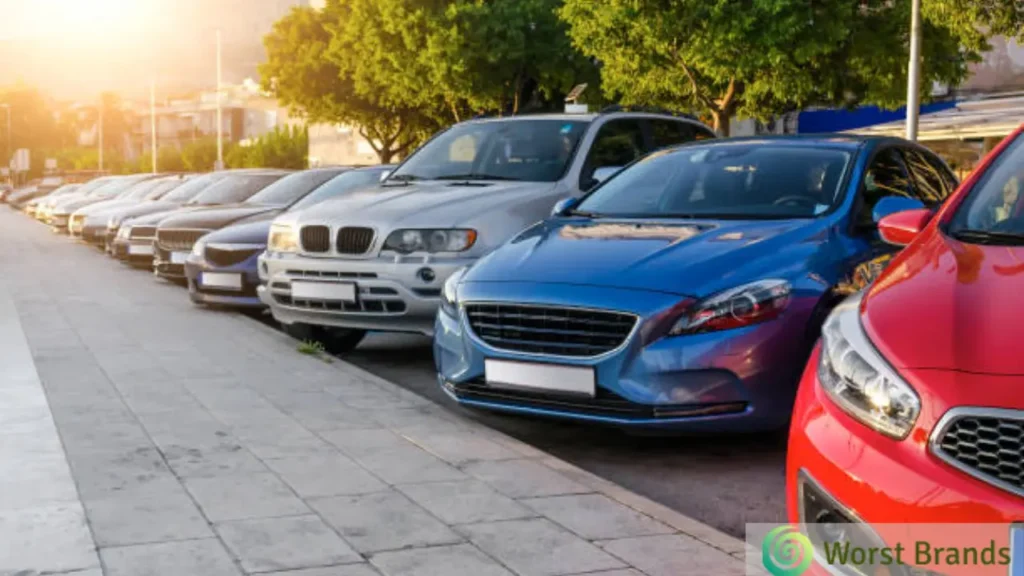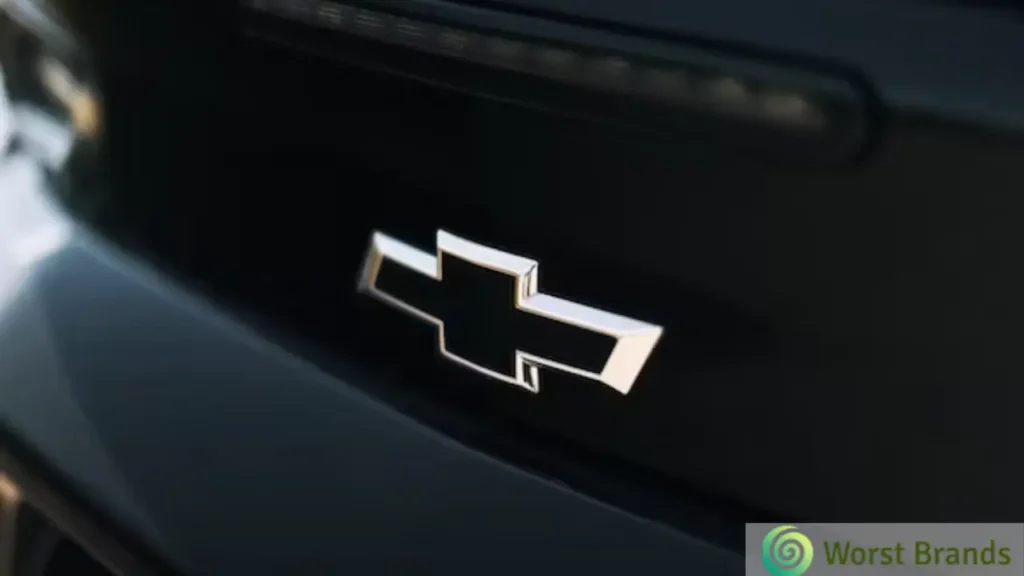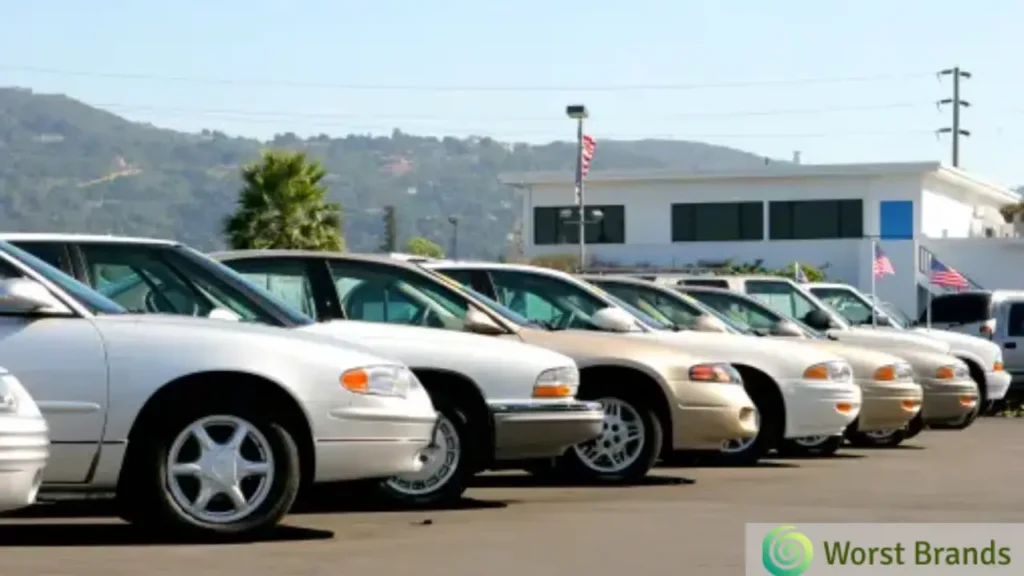American automotive history is dotted with some incredible cars, but not all of them have been winners. As a car enthusiast, I’ve seen my share of mediocre cars.
Today, let’s look at some of the worst American cars to buy.
These models are stark reminders of what happens when design, functionality, and market needs misalign.
From underwhelming performance to aesthetic misadventures, join me as we delve into a curated list of these automotive blunders.
Table of Contents
- Worst American Cars
- 1. AMC Pacer: A Unique Concept with Practical Downfalls
- 2. Ford Mustang II: The Misstepped Successor
- 3. Ford Edsel: The Misguided Venture
- 4. Ford Pinto: Prioritizing Cost Over Safety
- 5. Cadillac Cimarron: The Compact Luxury Misfire
- 6. Pontiac Aztek: The Design Debacle
- 7. Chevrolet SSR: The Hot-Rod That Wasn’t
- 8. Chevrolet Corvette 305 “California”: A Mismatched Legacy
- 9. Plymouth Prowler: Retro Style, Modern Disappointment
- 10. Chrysler TC By Maserati: Failed Fusion
- 11. Saturn ION: Subpar Performance and Design
- 12. Cadillac Fleetwood V8-6-4: Misguided Technological Leap
- Conclusion
- Christopher Evans
Worst American Cars
Due to poor performance, reliability and value for money, the worst American cars include AMC Pacer, Ford Mustang II, Cadillac Cimarron, Pontiac Aztek and a few others.

1. AMC Pacer: A Unique Concept with Practical Downfalls
The AMC Pacer broke the mold with its “world’s first wide small car” design, a bold attempt to stand out in the compact car segment.
Launched with a distinctive wide stance and large glass area, it initially garnered interest for its unconventional approach.
However, the Pacer’s novelty quickly faded due to its practical shortcomings.
Its heavy 4.0-liter I6 engine resulted in poor fuel economy, a critical factor in the energy-conscious era.
Furthermore, the extensive use of glass necessitated constant air conditioning, adding to its inefficiency.
These practical issues overshadowed the Pacer’s unique design, making it a case study of the importance of balancing innovation with functionality.
2. Ford Mustang II: The Misstepped Successor
During the 1970s oil crisis, Ford introduced the Mustang II, a stark departure from its predecessor’s Mustang.
Based on the compact Pinto, this iteration of the Mustang featured a modest 4-cylinder engine, responding to the era’s fuel economy concerns.
However, this shift proved to be a disappointment for Mustang enthusiasts.
The lack of power and performance significantly deviated from what had been an iconic representation of American muscle, leaving many questioning the direction of the Mustang lineage.
Not only in America, some of Ford’s models, like Falcon XK and Falcon AU are considered among the worst Australian cars.

3. Ford Edsel: The Misguided Venture
Next on our list of worst American vehicles is The Ford Edsel. Its story is a tale of ambition clashing with reality.
Launched with much fanfare and a hefty investment of more than $400 million, the Edsel’s downfall was as dramatic as its introduction.
Plagued by an unappealing design and subpar manufacturing quality, it failed to resonate with consumers.
Its timing couldn’t have been worse, aligning with a recession that further dampened its appeal.
The Edsel’s poor sales performance led to its swift discontinuation, making it among the worst Ford cars ever.
4. Ford Pinto: Prioritizing Cost Over Safety
The Ford Pinto, infamous for its safety debacle, is a stark reminder of the consequences of prioritizing affordability over safety.
The car’s design, specifically its fuel tank placement behind the rear bumper, became a major liability, leading to fires in rear-end collisions.
This flaw marred Pinto’s reputation and led to tragic outcomes, igniting a national debate on automotive safety standards.
Pinto’s legacy is not one of innovation or performance but an exemplary example of the unsafe American cars to avoid.
5. Cadillac Cimarron: The Compact Luxury Misfire
Cadillac’s Cimarron is a textbook case of badge engineering gone awry. Marketed as a compact luxury vehicle, it was essentially a Chevrolet Cavalier sporting a Cadillac badge.
This thinly veiled attempt to break into a new market segment backfired due to Cimarron’s lack of distinctive features and underwhelming performance.
The Cimarron’s failure to deliver the luxury and innovation expected of the Cadillac brand led to its downfall and placed it among the worst American luxury cars.
Similarly, you might find exploring bad Italian cars enlightening, showcasing how luxury intentions don’t always translate to success.
6. Pontiac Aztek: The Design Debacle
The Pontiac Aztek remains infamous in the records of automotive history, often tagged as one of the ugliest American cars ever made.
Its design was a chaotic blend of conflicting ideas, failing to create a cohesive aesthetic. This design failure played a significant role in Pontiac’s eventual decline.
The Aztek’s driving experience did little to redeem its reputation, offering nothing remarkable to overshadow its visual shortcomings.
If you’re curious about other design misadventures in the automotive world, look at the worst French cars ever made.

7. Chevrolet SSR: The Hot-Rod That Wasn’t
The Chevrolet SSR was an ambitious attempt to fuse the spirit of a hot rod with modern design.
Utilizing an SUV platform paired with a Corvette engine, it aimed to captivate the market with a unique blend of style and power.
However, the SSR fell short and became one of the worst General Motors cars.
Its performance was underwhelming, and the design did not resonate with consumers, resulting in lackluster sales.
The company manufactured 24,000 automobiles, and only 9,000 were sold.
Coupled with a hefty price tag of around $45,000, the SSR’s limited appeal is a notable example of a missed opportunity in automotive innovation.
8. Chevrolet Corvette 305 “California”: A Mismatched Legacy
Launching in 1980, the Chevrolet Corvette 305 “California” edition was an underwhelming chapter in the Corvette saga.
With a modest 180 horsepower output, it strayed significantly from the model’s high-performance heritage.
The automatic transmission further distanced this variant from the thrilling driving experience synonymous with the Corvette name.
All these shortcomings make the 305 the worst American Corvette ever made.

9. Plymouth Prowler: Retro Style, Modern Disappointment
Next on our list of bad American cars to avoid is the Plymouth Prowler.
Plymouth’s attempt at creating a modern roadster with a retro flair culminated in the Prowler.
However, its aspirations were dampened by an underpowered 3.5 liter V6 engine and the lack of a manual transmission.
The American brand only sold a little over 11,000 units despite continuously being manufactured for 5 years.
These elements stripped the Prowler of the authentic hot-rod experience, leaving car enthusiasts underwhelmed and questioning Plymouth’s direction with this model.
10. Chrysler TC By Maserati: Failed Fusion
The Chrysler TC by Maserati collaboration promised a blend of American engineering and Italian design finesse but fell short on both counts.
Despite its high price tag, the car’s reliability issues and mediocre performance failed to meet the expectations of either brand.
Its aesthetic appeal, meant to convey luxury and sophistication, couldn’t compensate for its performance shortcomings, making it a misstep in the luxury automotive market.

11. Saturn ION: Subpar Performance and Design
Saturn ION’s journey in the automotive market was marked by a struggle to establish a clear identity.
Its design was criticized for being uninspired, and the interior quality didn’t meet the expectations of discerning buyers.
Compounding these issues was the ION’s lackluster handling, which detracted from the driving experience.
Perhaps most notably, its unconventional instrument cluster placement was a point of contention, deviating from traditional designs and alienating potential customers.
12. Cadillac Fleetwood V8-6-4: Misguided Technological Leap
Cadillac Fleetwood’s V8-6-4 model, introduced in the early 1980s, is a poignant example of how advanced technology can sometimes backfire.
This model was equipped with an innovative but flawed electronic cylinder deactivation system.
Intended to improve fuel efficiency by varying the number of active cylinders, the system led to various reliability issues.
Owners frequently experienced erratic performance, with the car defaulting to lower power modes or stalling unexpectedly.
This technological misstep ironically rendered Fleetwood a subpar American car in terms of dependability and smooth driving experience.
Conclusion
In exploring American automotive history, we’ve uncovered the other side of the coin: the worst American cars that serve as cautionary tales.
These models, from the underperforming Ford Mustang II to the controversial design of the Pontiac Aztek, illustrate the pitfalls of neglecting consumer needs and market trends.
They remind us that innovation without direction, technology without reliability, and design without functionality can lead to vehicles that are best avoided.
Christopher Evans is a Mechanical Engineer and is a distinguished expert in tire and electronic appliance testing with over 15 years of experience. Holding certifications like Automotive Tire Service (TIA) and Certified Appliance Professional (CAP). He is also a member of the the American Society of Mechanical Engineers (ASME) and has significantly contributed to safety standards and testing protocols in both industries. Evans is a respected speaker and award recipient.
